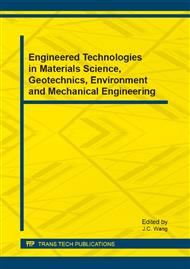p.424
p.428
p.435
p.439
p.444
p.448
p.453
p.466
p.470
A Sensor Used to Detect the Thigh Human-Machine Coupling Force in Lower Limb Rehabilitation Robot
Abstract:
The acquisition of the patients’ active force is the key process to realize the active rehabilitation function of lower limb rehabilitation robot. This paper analyzes the relationship of human-machine coupling force and patients’ active force, based on what put forward a proposal to acquire the active force .A sensor is designed to detect the human-machine coupling force and a stress analysis is carried on based on the actual usage of the sensor. The scheme of the stress foil arrangement and bridge circuit design are discussed in the paper. And a FEA is also carried out to analyze the strain situation of the elastomer.
Info:
Periodical:
Pages:
444-447
Citation:
Online since:
February 2013
Authors:
Keywords:
Price:
Сopyright:
© 2013 Trans Tech Publications Ltd. All Rights Reserved
Share:
Citation:


